Day 3… wow, amirite?! From DJ Elliot spinning at lunch to the answers we got to the best possible email movie names. Here’s Jason Rodriguez’s and my re-cap on live sessions for the day, with social additions compliments of Whitney Rudeseal Peet. If you haven’t already, register or sign in to access the recordings for these sessions and the on-demand content. Talk about an email party 24/7! 💌 🥳
Going Agile: The New Standard for Email Efficiency & Success | Magan Le & Lauren Smith @ Litmus
Our own Lauren Smith and Magan Le kicked us off with a mid-week stretch for our brains and workflows by introducing us to the new agile email workflow (and even talked about how Litmus and other tools can help you get there!).
Why do you need an agile email workflow?
53% of brands take 2+ weeks to create an email, with design and review taking the most time.
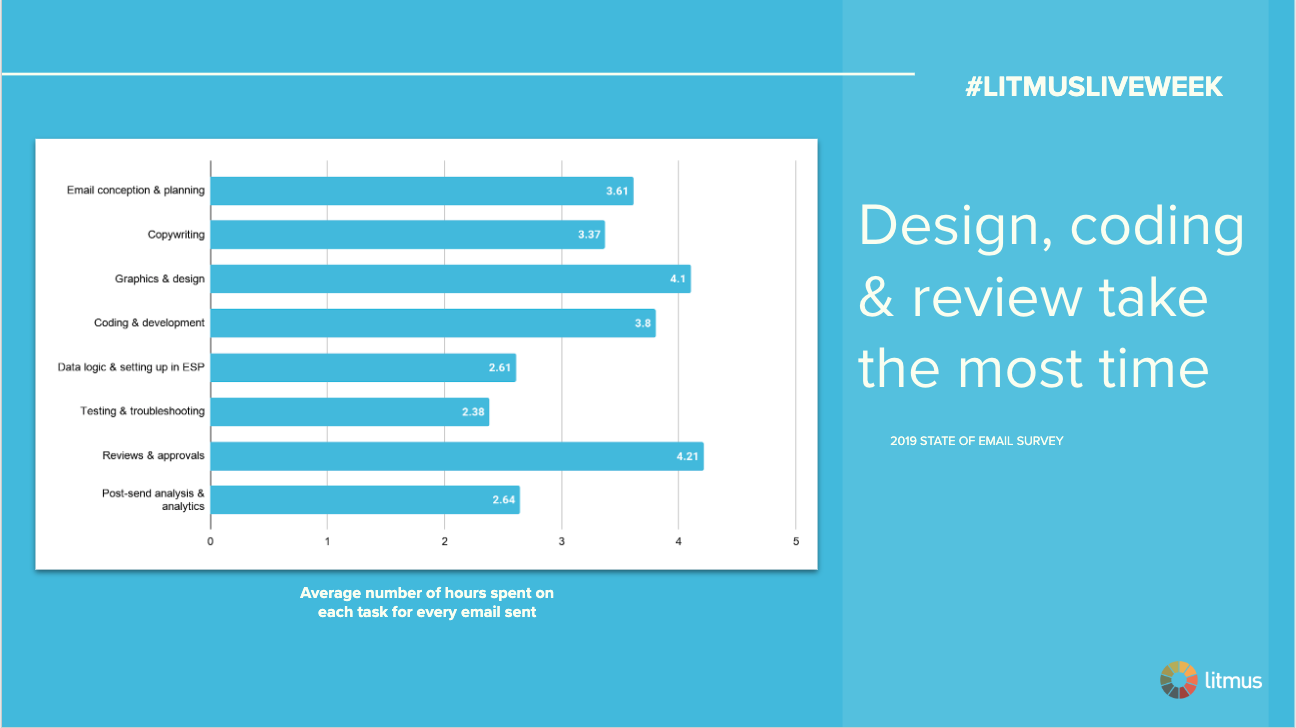
So, it makes sense to take a page out of the software development book and apply agile methods to get more things done, more quickly. Not to mention, the benefits:
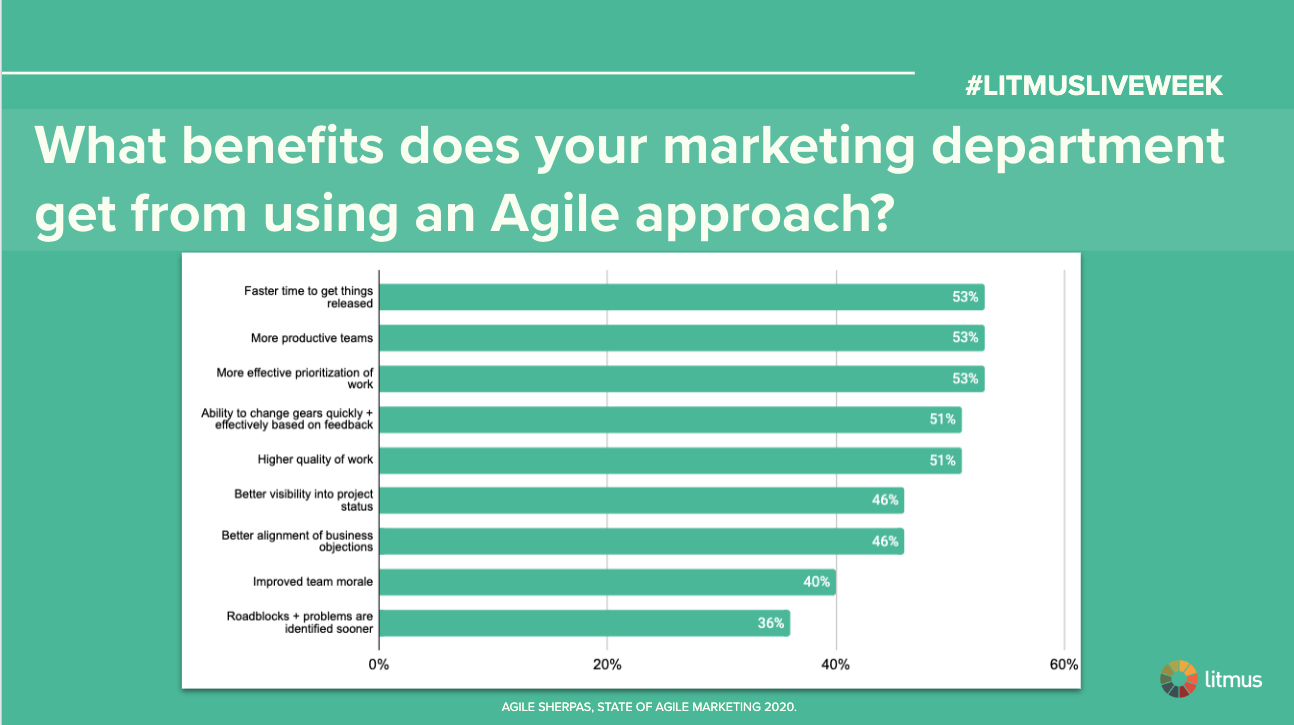
The typical linear email workflow looks something like this:
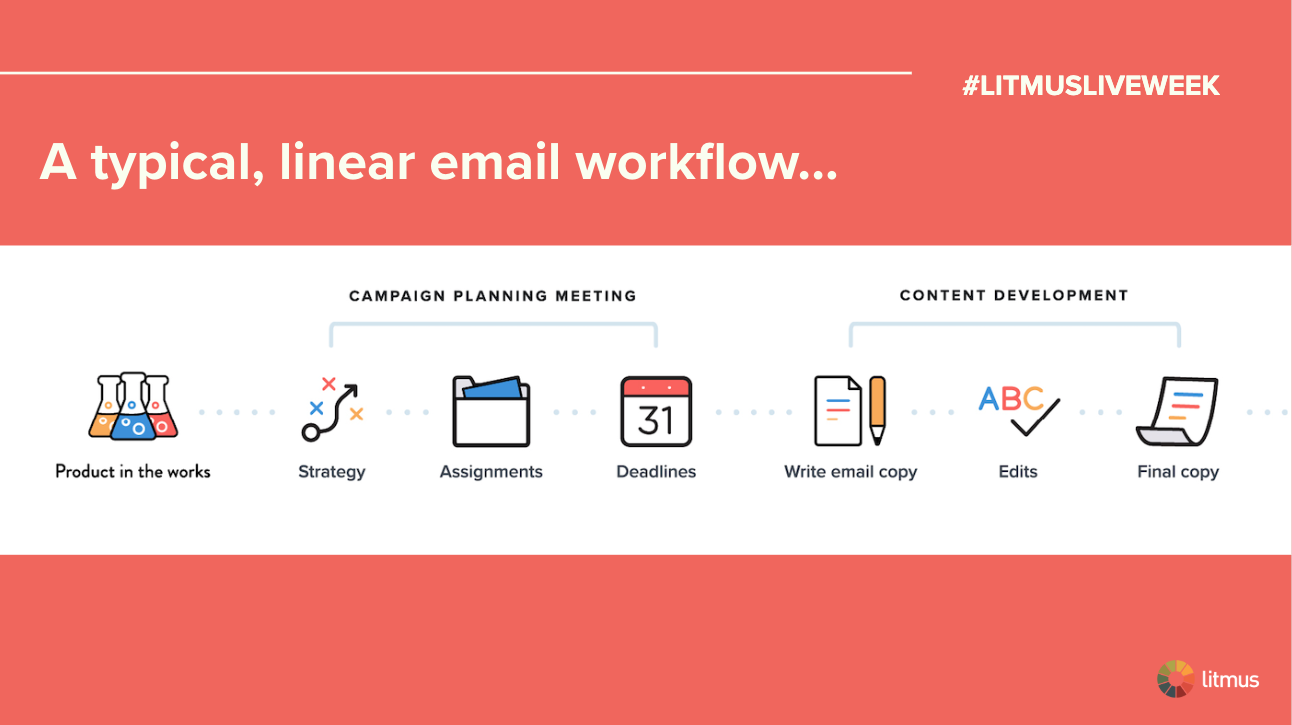
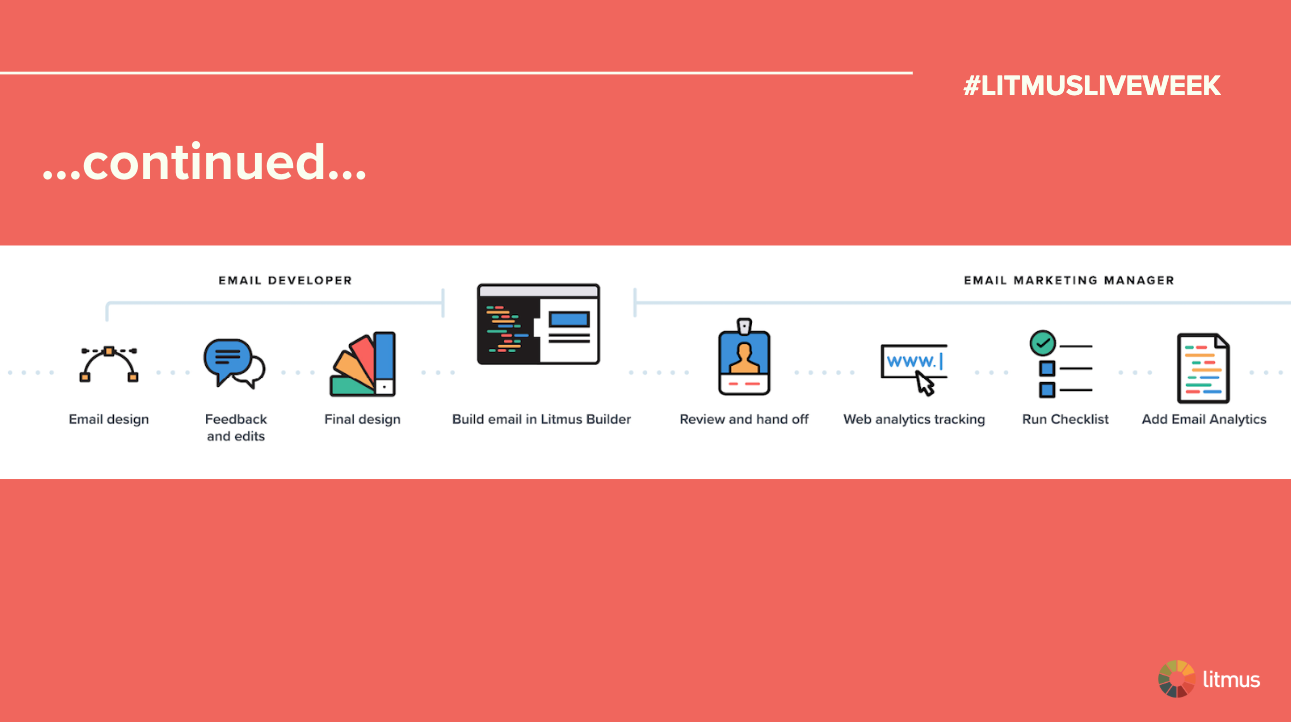
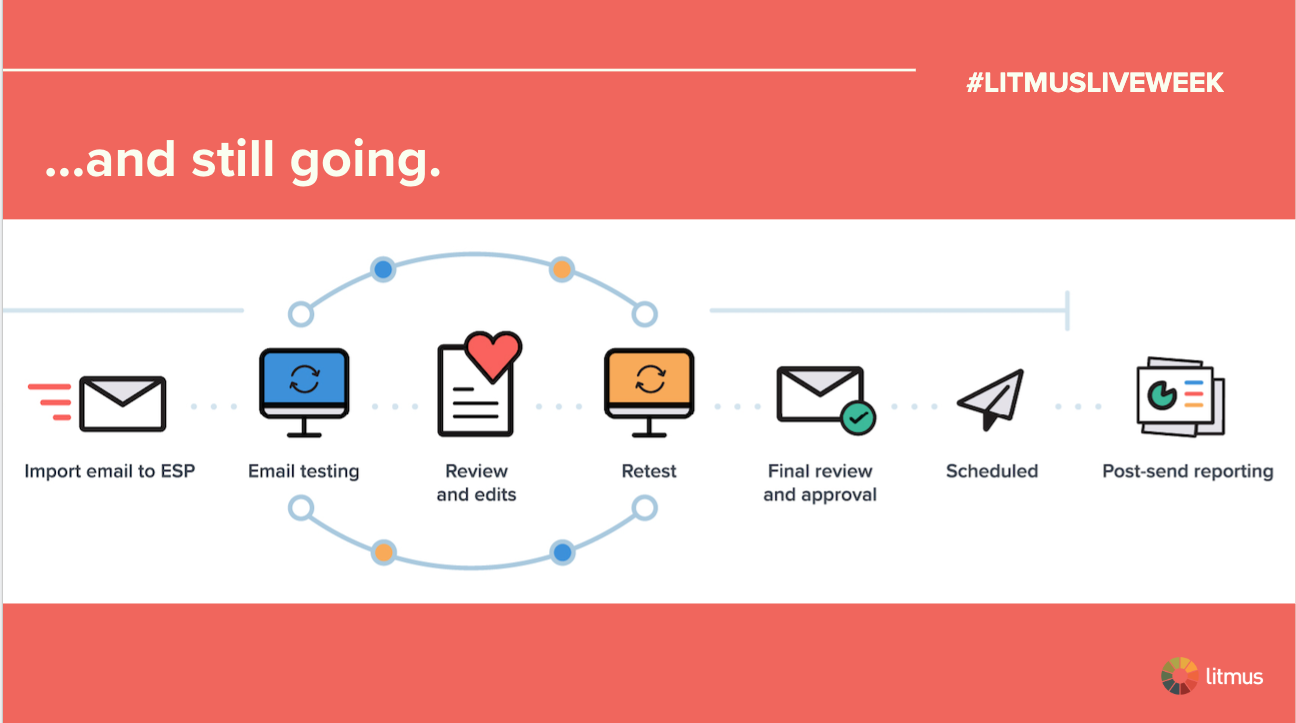
With a process like that, it can seem daunting, but…
You can make change happen, even while the plane is flying
When you work in email, where the work is constant and it feels like you’re just catching your breath between projects, it can feel like making a change to your workflow is impossible. And change is hard, but you can do it! Two ways to wrap your mind around it are:
Start small. We call those micro-efficiencies. You don’t have to tackle the entire workflow at once.
Work on a proof of concept. To get buy-in, it may be best to start with an email that doesn’t have a lot riding on it to prove that the flow can work. So that end of quarter promotion may not be the best one. 😉
The good news? Everyone can go agile
Whether you are a team of one, a team of many… a team with Litmus or a team without (gasp!)… everyone can go agile.
Centralize and automate
- Store code, design snippets, etc. in a single place (Litmus, cloud storage, etc.)
- Keep all stats in one spot. Whether that’s a dashboard or a spreadsheet (hello, pivot tables!)
- Put reviews & approvals in one place (Google docs, project management tool)
Empower people across your organization
- You may be an email team of one, but do you work with another marketer who is AWESOME at writing copy? Determine which skills you excel at, embrace those, and lean on others and their skills to get the job done.
- For larger teams, seek support from others with expertise in various areas or empower them to make changes (like in Visual Editor in Litmus Builder).
See what the new workflow looks like (hint: It’s no longer 3 slides!) and get the full scoop in the recording. Or access it now in our ebook, Going Agile: The New Email Workflow.
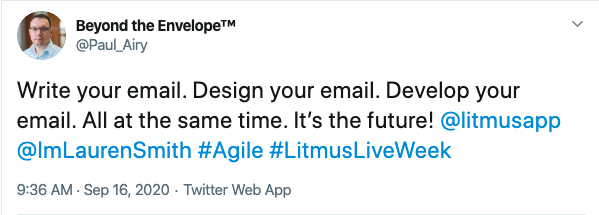
Interactivity Insights: A Fireside Chat With Salesforce | Joe Teplow @ Rebel & Salesforce, Parker Schott @ Vimeo
In today’s fireside chat, Litmus’ Jason Rodriguez talked with Joe Teplow, from Rebel and Salesforce, and Parker Schott, from Vimeo, about all things interactive email. From Joe and the Rebel team’s pioneering work on interactivity to Salesforce’s latest tools and Vimeo’s approach to building, testing, and analyzing interactive campaigns, the conversation was a candid look at how two practitioners think about interactivity in 2020 and beyond.
Don’t do interactivity for interactivity’s sake
While most talks and blog posts focus on the fancier things you can do with interactive emails, both Joe and Parker were adamant about only using interactivity in service to the user. Although we’re all excited about the possibilities of interactivity—from carousels to in-email shopping carts and everything in between—we all agreed that marketers too often focus on the newest, shiniest techniques to surprise their subscribers or impress their stakeholders.
Those techniques often create friction for users that aren’t used to them or expect more straightforward interactions. Furthermore, they often consume valuable time and resources on already strapped marketing teams. Focusing on splashy, interactive, tentpole campaigns is tempting, but more often than not, simple interactivity in key lifecycle campaigns will drive user engagement and business goals at the same time.
Interactivity is a way to remove friction from the email interaction. ~Parker Schott, Vimeo
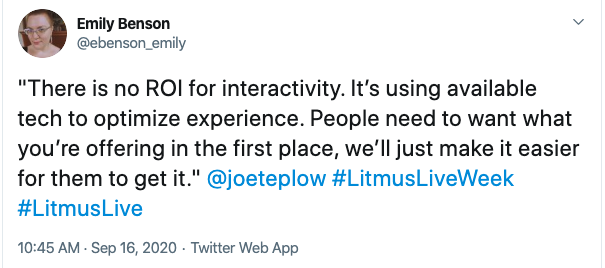
It doesn’t have to be flashy to be effective
Building on the last point, not every interactive experience needs to be super flashy. Sometimes the most effective interactions are the simplest. In the case of Vimeo, they saw great success in using an in-email form as one part of a larger lifecycle campaign to help with progressive profiling.

As part of their welcome series to new subscribers, they ask two basic questions and feed the answers back to a Data Extension in Salesforce Marketing Cloud. Based on the answers, subscribers are sent on different journeys that speak directly to their needs, creating a better, more valuable experience for both the user—who gets the content they need—and the business—which learns more about their users directly from them.
The future is bright
Finally, all three participants (and a lot of the attendees polled) were optimistic about interactivity’s role in email marketing. There’s a lot of change—between vendor tooling, ESP and client support, and initiatives like AMP for Email—but it will likely result in richer experiences for subscribers. And, with advances in tooling like what Salesforce has been working on for Marketing Cloud, creating interactive emails will get easier and more accessible over time.
It’s likely we won’t see any standardization around the languages and technologies used to create interactive content (it is email, after all) but subscribers are becoming more familiar with interactive emails and just now starting to expect them in their inbox. That expectation will continue to drive innovation across the industry, giving email marketers more powerful tools than ever before.
The Conversational Case: How To Script the Stories That Sell Ideas | Tamsen Webster
Tamsen Webster picked up where she left off yesterday in how to actually put the methods she discussed into practical use. We got hands-on in the session (yes, we filled out a worksheet!). She provided context throughout and answered questions.
So if you want to make sure your idea comes across in the most powerful way that it can… and drive action/results/whatever you are trying to accomplish, you can learn the structure to make it so. Here’s a snapshot of part of the worksheet.
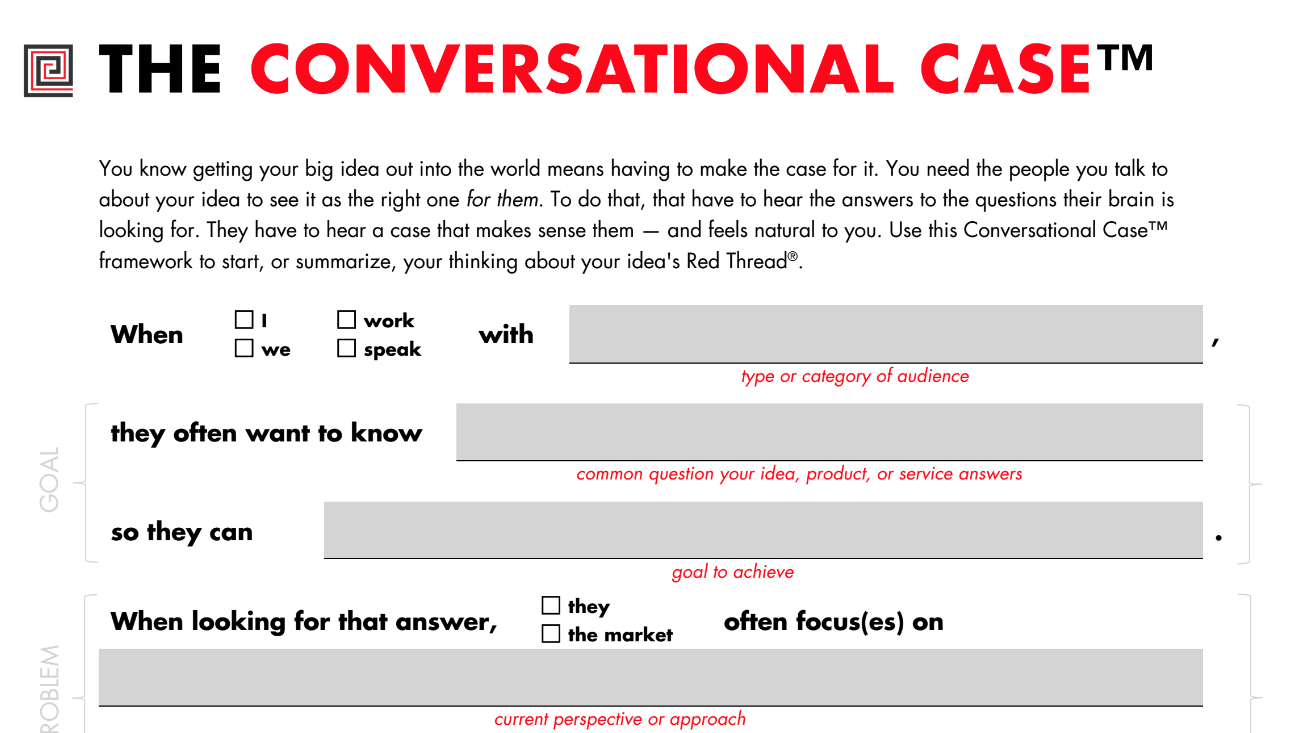
Learn how to get the full worksheet AND get a detailed walkthrough by Tamsen herself to get the most out of this one in our recording.
Megan Moller is the Sr. Director of Lifecycle Marketing at ActivTrak.
